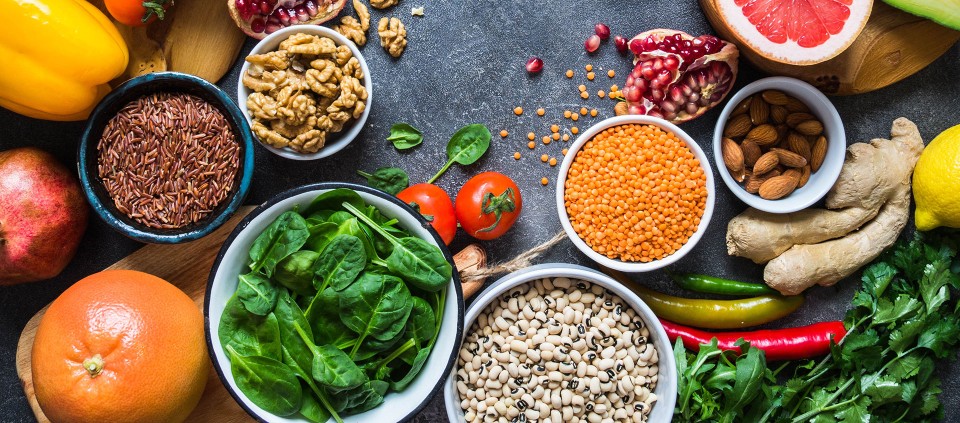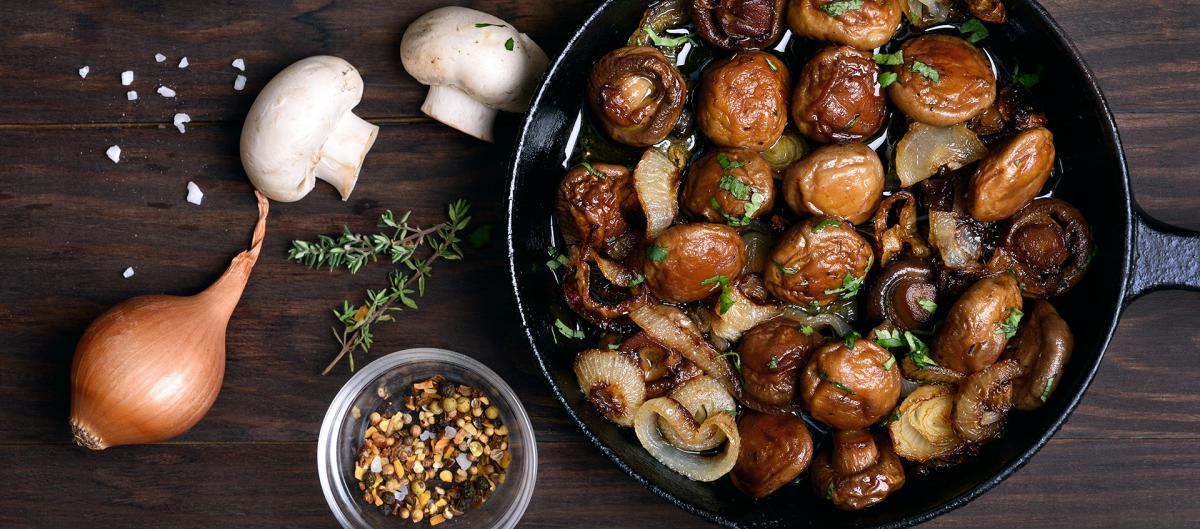The Biggest Food and Nutrition Trends for 2019

There’s a terrace at the annual Academy of Nutrition & Dietetics’ Food & Nutrition Conference and Exhibition (FNCE), where you can look down on the entire exhibit floor: row after row of food companies large and small, brightly displaying their latest flavors and innovations. It is a curious and interesting place—a big food mosh pit—and it provides a view of what eaters are asking for, interpreted through by commerce.
Food trends—the meta-shifts apparent at trade shows and in food media—tell us something about ourselves through the lens of our eating aspirations. While I wish American food trends were more like Europe’s (where are the best truffles this year, whose vintage of red wine or artisanal cheese is best?), food trends in the United States do reflect our particular style of life. The FNCE exhibit is a distillation of what we want in healthy food now.
Overall, food quality is changing for the better. Smaller artisanal food companies are blossoming like spring buds, but large food companies are (finally) responding in bigger ways to the demand for cleaner, lower sugar, simple, healthful options. You can still find mountains of refined carbohydrates out there, but there are also mass-produced real-food alternatives.
Here are some of the foods this year that tell the story:
- Plant-based proteins: Beans, nuts, and seeds replace grains in pastas and baked goods products.
- Mushroom love: Wild, grow-your-own, medicinal teas made from fungi, plus mushroom flavor in soups and center-of-plate offerings.
- Bone broth: This collagen and mineral-rich stock, made from a long, slow steep of bones, is now available from food companies large and small.
- Modern versions of nostalgic “hippie” health foods: From hummus made of every bean, nut, and plant to yogurts made of every animal, nut, or plant milk and fermented everything, health foods of the past are getting an update.
- Herbs and herbal flavors: Basil and cilantro are stand-ins for food-as-medicine, and the fuller range of herbal flavors—like juniper, tulsi, and chamomile—are joining in.
- And of course, cannabis. The cannabis extract cannabidiol (CBD), is all the rage and is in candy, drinks, oils, and supplements.

Here are more quality-related trends, as well as innovation in how nutrition is delivered.
Quality Now: Artisanal, Sustainable, Socially Beneficial
Quality food is still nutrient dense (lots of nutrients per calorie) and fairly low in synthetic chemicals. This year, however, consumers are taking quality to a whole new level.
The millennials are influencing the food market in a big way. This year, artisanal food companies with a conscious approach and clean, cute graphics stole the spotlight from familiar big-food names. A number of these smaller food companies are using the social mission model of Ben & Jerry’s and have a portion of their profits going to social causes.
Eaters are dreaming of real food—a new kind of quality and a deeper connection. They want to sense where their food comes from, and know that their choices serve the earth through sustainability. Homemade food is dominant again, and while we still want convenience, fast junk food and frozen meals filled with synthetic chemicals and wrapped in tinfoil just don’t cut it. The manipulation of food so that we can eat with abandon and not gain weight is gone. While food technology is still there—in the world of supplements and functional foods for gut health, immune support, and nutritional therapeutics—high-tech is low-key and in more specialized areas, including packaging and delivery.
Next-level sustainability is here. While less that 1 percent of American farmland is certified organic, interest in and movement toward more sustainable practices is widespread. There is a new certification for farms transitioning to organic, and a new certification for biodynamic farming (in which the entire farm functions in an elegant, self-contained bio-system where plants feed animals and animals feed plants).

Plant-based foods now have advocacy groups. In the food pharma aisle, more sustainable herbal and whole-food alternatives with lower carbon footprints are sharing space with traditional supplements.
Fish farming is moving along, too, with shellfish regenerative farms working to replace lots of what we’ve been drawing out of the oceans for a long time, and other groups looking to pull out of the oceans what doesn’t belong there—namely, plastic.
Nutrition Now: Mindful, Personal, and at Home (or Anywhere)
Mindfulness is mainstream and is being practiced everywhere for nearly every application. Mindfulness practitioners, including mindful-eating practitioners, are everywhere. At FNCE, I met a dozen nutritionists with new books on mindfulness. This is overall a good thing for our nutritional well-being. Along with the expansion of mindful eating, however, is a new tempering of teaching mindful eating that is grounded in nutritional adequacy to prevent over-restriction. And the “health at any size” movement has changed the way we talk about weight. Instead of the scale, focus on health.
Your genetic nutrition blueprint is more accessible than ever. Testing to reveal your best diet and nutrition factors to watch is getting easier and cheaper. Supplement manufacturers are creating apps that can read your SNPs (single nucleotide polymorphisms, the genetic mutations we all carry that make us who we are as individuals) to give you customized supplements. Better yet, work with a nutritionist to shift your diet to accommodate your genetics.
Telehealth is happening now. Online platforms allow dietitians and other health professionals to provide high-touch care that includes assessments, smartphone-friendly food journals, group sessions, and appointments from home, via video or phone consults that are HIPPA-compliant (meaning they adhere to federal health regulations). While nothing replaces sitting face-to-face with someone, teleheath is a boon for those who live far away from the practitioners they want to stay in contact with.
The food now in fashion offers a taste of what is unfolding in our culture and how we are participating in the culinary conversation. The world of food is a big wide world, and this year, it reflects trends that can benefit all of us.
Find out about nutrition programs with Annie B. Kay at Kripalu.
© Kripalu Center for Yoga & Health. All rights reserved.
Annie B. Kay, MS, RDN, E-RYT 500, C-IAYT, is an author, nutritionist, Kripalu faculty member, and important voice in whole-foods nutrition and yoga.
Full Bio and Programs